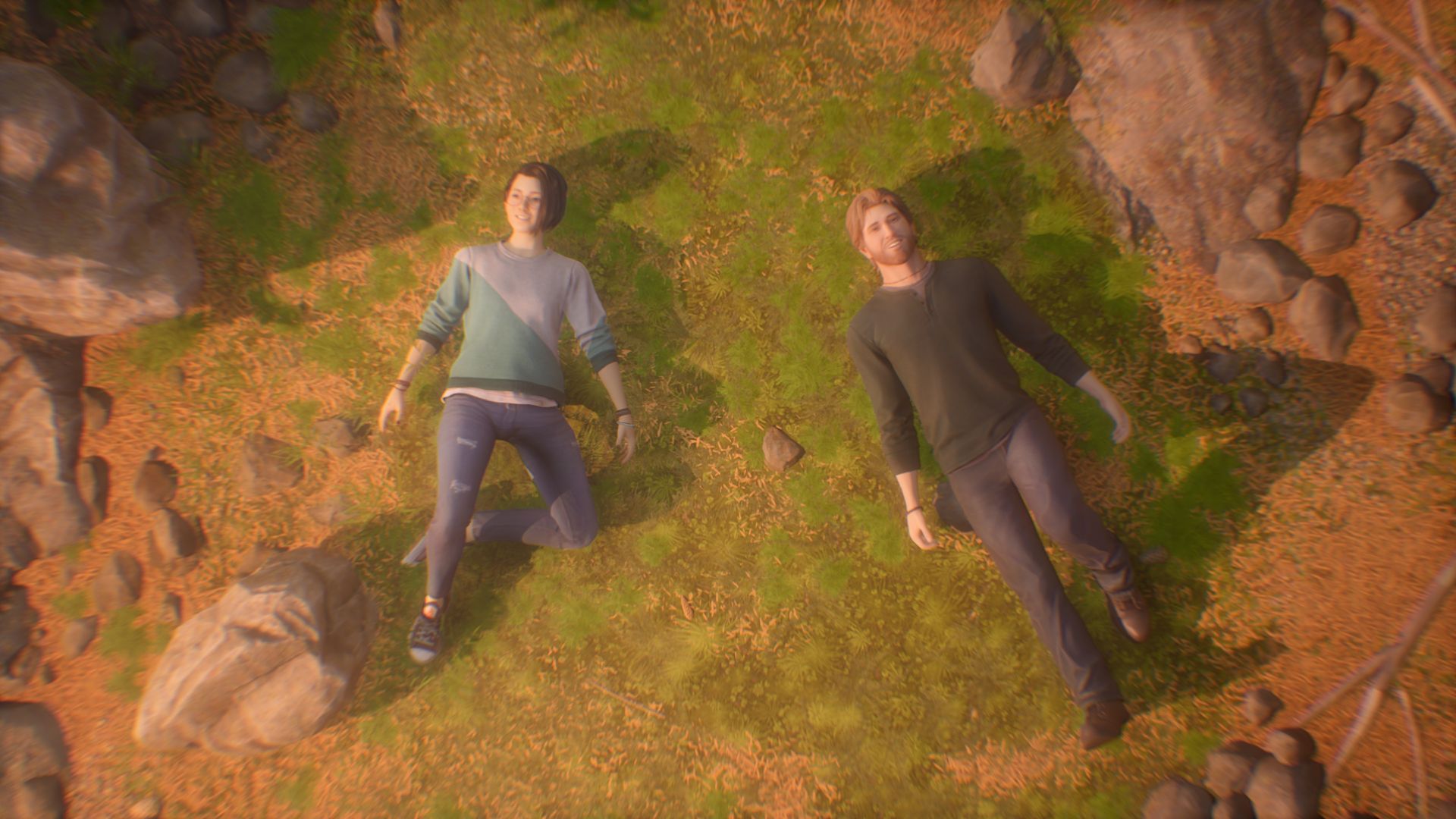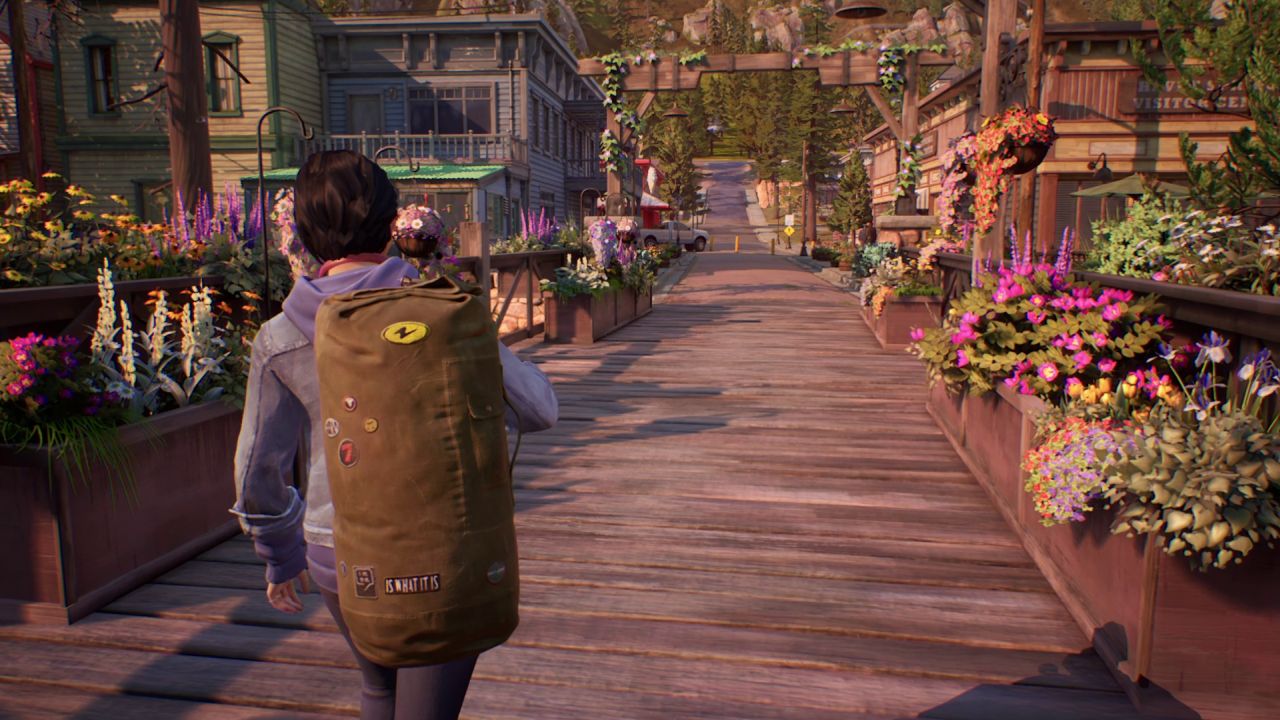Alex is a 21-year-old product of the foster system who can feel, manipulate or even absorb the intense emotions of those around her. We join Alex just as she steps off the bus into a remote Colorado mining town called Haven Springs to start a new life with her brother Gabe. Things - as they typically do during weddings in soap operas, the opening ten minutes of a hospital drama, or the end of the first chapter of a Life Is Strange game - go terribly wrong. What follows is simultaneously my most and least favourite Life Is Strange game. Haven Springs used to be a silver mining town, and is now beholden to the Typhon mining company that blasts them thar hills for uranium. There is an accident that results in Gabe’s tragic death - or was it an accident? Prepare to uncover the obvious answer to that question as Typhon, whose logo might as well include “We’re Transparently Evil!” as a slogan, are immediately implicated in a conspiracy. Alex and her mini Scooby Gang of pals work to uncover shocking secrets, both personal and corporate. Unlike the other LIS games, which came episodically, True Colors is a complete 8-and-a-bit-hours game with chapters. It’s also made by Deck Nine, who did the first game’s prequel Before The Storm, rather than series creators Dontnod, so there was always going to be a bit of suspicious side eye directed toward True Colors. In Before The Storm, Deck Nine were handicapped before by having to write a story with existing Life Is Strange characters, but given freer rein here, they’ve done a decent job making the series their own. Alex’s empath powers are an interesting reflection of her past in the foster system - and other hints at having grown up in an extremely emotionally intense or abusive environment - as victims in these situations can need to read and respond to emotions very quickly. Despite it being her brother who died, Alex spends the entire game running around doing literal emotional labour for everyone else, and her whole journey is about learning how feelings are not something to be afraid of. It’s pretty smart. Empathy as a superpower does seem quite trite at first glance, but then you look at the past two years in real-life and wonder if Deck Nine aren’t onto something here. And Alex can also “see” the world as people in those states see it. If someone is very sad, it suddenly seems like it’s raining outside. If they’re happy then flowers are blooming. The best section in the entire game is one where you’re playing a bodged LARP to cheer up Ethan (the son of Gabe’s artist/weed-dispensary-owner girlfriend, Charlotte). Ethan becomes so happy that you see the town’s park as a mysterious ruin, your costumes as full fantasy garb, and a middle-aged man as an undead lord to fight. Even the UI changes. But this is really the only time Alex’s power feels truly transformational. The rest of the time you’ll see someone who is angry chiselling at a metaphor statue, or someone who is pleased seeing funtime memories reflected in the shape of clouds, that kind of thing. In true Life Is Strange-style, though, the full impact of Alex’s powers on others isn’t really examined. At no point does anyone go, “Hey, actually, actively manipulating someone’s feelings in this context is pretty grim, y’know?” There are a couple of points where you can choose to suck feelings away from someone, but the lesson the game teaches you about this is inconsistent. The instance you can do it to try to make someone feel better is the wrong thing to do; where you can do it to serve you own needs is the… right thing? Similarly, setting your story in a mining town seems like a deliberate choice, yet the game never fully explores a) why Haven Springs is so ridiculously idyllic (able to support a physical record store that seems to operate entirely on the honour system, aforementioned weed dispensary, a bar where mates apparently drink for free, and so on, and b) why the locals feel so beholden to Typhon. The conspiracy exists only for conspiratorial plot reasons. There are vague gestures towards, but no actual discussion of, how someone in that community might be sympathetic to Alex but also worried that everyone could lose their livelihoods. And at that point, why bother setting it in a mining town? You could replace most of the mining-related parts of this story and lose nothing. True Colors also has some distressing clangers of obviousness, like when Alex arrives and sits alone in her flat to play a verse and chorus of Radiohead’s Creep, looking all sad. And if I did not want to be a florist whith Alzheimer’s, I would simply not open a shop called Lethe Flowers. Then there’s the name of the game itself: emotions are colour coded, blue for sadness, yellow for joy. And so on. I see what you did there. But then again, I stayed up playing True Colors until two in the morning! It’s certainly the best looking Life Is Strange game there’s been, both in the sense that Haven Springs is a sun-dappled delight with a pedestrianised main street covered in flowers, but also that you get two cutie-patootie love interests (although you can forgo romance entirely). Steph, who attended the same school as original LIS protag Max, is now 25 and moved to Haven Springs for frankly dubious reasons, while Ryan is a homegrown son of the town; both were besties with Gabe before he died. I found it much easier to relate to this core group than past LIS teens, mostly because they’re closer to my own age, but also because they’re more natural and likeable. Sure, sometimes they act cool and perfomative as some YA author John Green characters, and they also don’t do things real adults in 2019 would (e.g. backing up your evidence so it exists outside of one USB drive, goddamn). But in general, your main trio of Alex, Steph and Ryan are great, especially in the romance scenes, which are goofy or awkward in a very sweet, realistic way. The other residents of Haven Springs are an interesting mix, with a diverse set of problems and reactions to tragedy. Sadly the ending - which has apparently six-ish versions, varying according to your accumulating choices - was a bit rushed, the ultimate decision predicated on Alex yearning for a music career that didn’t really feel supported by the rest of the game. The roundup of where-are-they-nows felt incomplete to me, too. I wanted to say goodbye to people properly. But that is perhaps testament to how much I liked the weirdos I’d been hanging out with. That, I think, was always the strength of Life Is Strange anyway. People liked spending time with Max and Chloe. I’m long since past the point where people listening to mimbling guitar while looking out the window is anything but annoying to me now, but True Colors moves the series forward, and is perhaps a better reflection of how the teens who might have loved the original Life Is Strange games are growing up, too. Alas, as much as I liked its enjoyable cast and Alex’s interesting empath powers, the rest of True Colors just falls short of true brilliance. Life Is Strange games are often given to painting their issues in black and white rather than shades of grey, and I’m disappointed True Colors ended up using such a limited palette, too.



